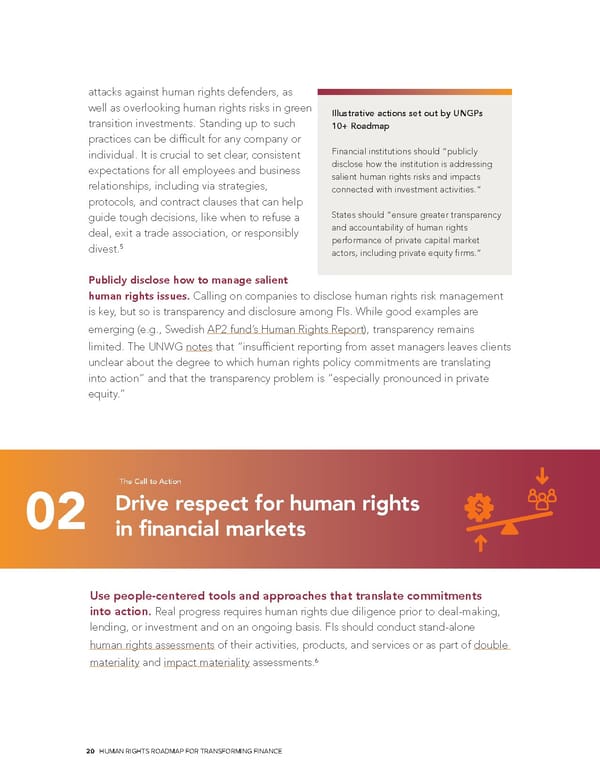attacks against human rights defenders, as well as overlooking human rights risks in green Illustrative actions set out by UNGPs transition investments. Standing up to such 10+ Roadmap practices can be difficult for any company or individual. It is crucial to set clear, consistent Financial institutions should “publicly expectations for all employees and business disclose how the institution is addressing salient human rights risks and impacts relationships, including via strategies, connected with investment activities.” protocols, and contract clauses that can help guide tough decisions, like when to refuse a States should “ensure greater transparency deal, exit a trade association, or responsibly and accountability of human rights divest.5 performance of private capital market actors, including private equity firms.” Publicly disclose how to manage salient human rights issues. Calling on companies to disclose human rights risk management is key, but so is transparency and disclosure among FIs. While good examples are emerging (e.g., Swedish AP2 fund’s Human Rights Report), transparency remains limited. The UNWG notes that “insufficient reporting from asset managers leaves clients unclear about the degree to which human rights policy commitments are translating into action” and that the transparency problem is “especially pronounced in private equity.” The Call to Action 02 Drive respect for human rights in financial markets Use people-centered tools and approaches that translate commitments into action. Real progress requires human rights due diligence prior to deal-making, lending, or investment and on an ongoing basis. FIs should conduct stand-alone human rights assessments of their activities, products, and services or as part of double 6 materiality and impact materiality assessments. 20 HUMAN RIGHTS ROADMAP FOR TRANSFORMING FINANCE
 Human Rights Roadmap for Transforming Finance Page 19 Page 21
Human Rights Roadmap for Transforming Finance Page 19 Page 21